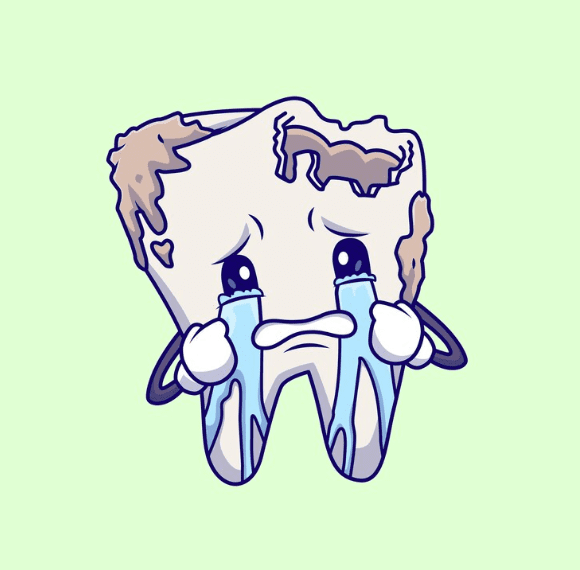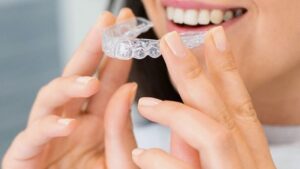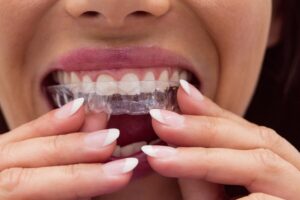Dealing with a cracked, chipped or bitten tooth is very frustrating and at times may cause a lot of pain. It can restrict the kind of food you take and influence your oral health in one way or the other. One common question people have in such situations is: Can I eat rice with bitten teeth? Rice is one of the most consumed grains globally because it is tender, easy to chew, and mostly easy to digest. Nonetheless, since dental damage affects the ability to chew, even soft foods may pose difficulties. In this blog, you will learn about eating rice with damaged teeth, how to eat rice safely and the precautions when you have dental problems.
Understanding the Nature of Bitten or Cracked Teeth
When considering if it is safe to consume rice containing damaged teeth, we have to study the various classes of dental damage and how such conditions affect your meals. According to the American Dental Association, teeth can sustain various kinds of damage, each affecting your ability to chew & eat (ADA, n.d.).
Types of Tooth Damage:
1. Craze Lines:
These are small, superficial cracks in the outer enamel that usually do not cause any pain but may lead to minor sensitivity.
2. Fractured Cusp:
When a portion of the chewing surface of the tooth has chipped off, usually around a filling. Though this may not affect the tooth’s pulp, it will make chewing painful.
3. Cracked Tooth:
A line that runs from the direction of the chewing surface to the bottom of the tooth. As the Mayo Clinic puts it, this kind of damage is painful when chewing food or when putting the damaged tooth into contact with hot or cold substances (Mayo Clinic, n.d.).
4. Split Tooth:
A more severe condition where the tooth is split into two parts. This condition may at times be severe and demands urgent intervention, and may necessitate extraction.
5. Vertical Root Fracture:
A vertical fracture that starts at the base of the tooth and moves in the direction of the occlusal surface making it prone to infection, and is usually pulled out (Cleveland Clinic, n.d.).
Such kinds of damages determine the kind of diet and dental treatment one should undertake and whether or not certain foods like rice are safe for consumption.

Is Eating Rice Safe with Bitten Teeth?
Rice, being a soft food, might seem like a safe option for someone with dental issues. According to WebMD, foods as soft as rice can also be dangerous because grains stuck in the crack or a sore area will be even more painful or invite infection (WebMD, n.d.).
1. Severity of Damage
The condition of your teeth plays a crucial role in determining whether you can safely eat rice:
-
Minor Damage (Craze Lines, Small Chips):
If the damage is not extreme you should be able to chew food like rice without any danger. The soft palatable grains of rice which are well cooked do not cause further irritation to people with minor dental problems.
-
Moderate Damage (Cracked Tooth, Fractured Cusp):
Rice might still be safe, but caution is necessary. Even soft foods can cause discomfort if a crack has extended into sensitive areas. Also, small grains of rice can be penetrated in the cracks or any other surface and this can lead to some other problems, as WebMD warns (WebMD, n.d.).
-
Severe Damage (Split Tooth, Vertical Root Fracture):
Avoid eating solid foods, including rice, until you consult with a dentist. Severe damage can worsen with even minimal pressure, and rice can easily get stuck, aggravating the situation, as highlighted by Colgate Oral Care Center (Colgate, n.d.).
2. Type of Rice and Its Preparation
The type and texture of rice matter greatly when you have dental issues:
-
Soft, Well-Cooked Rice
Varieties like white rice, jasmine rice, or basmati rice are ideal when cooked thoroughly. These are soft enough to minimize the risk of exacerbating any damage.
-
Sticky Rice:
Found in sushi or other Asian dishes, sticky rice can cling to teeth, including any cracks or chips, making it harder to clean and potentially leading to discomfort (Colgate, n.d.).
-
Brown Rice:
Brown rice tends to be firmer than white rice, requiring more chewing, which can increase pressure on damaged teeth. If brown rice is your preference, ensure it’s cooked until very soft.
-
Rice Porridge or Congee:
These preparations involve cooking rice with extra water until it breaks down into a creamy consistency, making it an excellent option for individuals with significant dental issues. It requires minimal chewing and poses little risk of causing further damage (ADA, n.d.).
Dental Care Tips While Eating Rice
Maintaining good oral hygiene is essential when dealing with dental injuries. Whether you’re eating rice or other soft foods, the following dental care practices can help minimize pain and prevent further damage:
1. Chewing Techniques
-
Chew on the Opposite Sid:
If only one side of your mouth is affected, try to chew on the opposite side to avoid placing pressure on the damaged tooth. According to the Cleveland Clinic, this helps reduce pain and prevents further damage (Cleveland Clinic, n.d.).
-
Eat Slowly and Mindfully:
Take small bites, chew slowly, and be mindful of how your teeth feel. If you notice discomfort or pain, stop eating and consult your dentist.
2. Oral Hygiene After Meals
-
Rinse Your Mouth:
After eating, rinse your mouth with warm water or an alcohol-free mouthwash. This helps remove any remaining food particles, reducing the risk of infection (WebMD, n.d.).
-
Gentle Brushing:
Use a soft-bristled toothbrush to clean your teeth, focusing on avoiding the damaged area while still keeping your mouth clean.
-
Flossing:
Be extra careful when flossing around the affected tooth. Removing food particles is crucial, but you don’t want to aggravate the damage by flossing too aggressively (Colgate, n.d.).
Managing Pain and Sensitivity
Dealing with pain and sensitivity is common after a dental injury. Here are some steps you can take to manage discomfort, especially when eating soft foods like rice:
-
Use Over-the-Counter Pain Relievers:
If you experience discomfort after eating, consider taking a mild pain reliever like ibuprofen to alleviate the pain (Cleveland Clinic, n.d.).
-
Avoid Extreme Temperatures:
Hot or cold foods can aggravate sensitivity in cracked teeth. Stick to foods that are closer to room temperature, as this will reduce the risk of triggering pain.
When to See a Dentist
If you’ve bitten your teeth, causing a crack, chip, or fracture, it’s important to seek professional dental care as soon as possible. According to the American Dental Association, delaying treatment can lead to more serious complications, such as infections, more extensive damage, or the need for more invasive treatments like root canals or extractions (ADA, n.d.). Early intervention is key to preserving your teeth and preventing further damage.
Treatments for Bitten Teeth
Depending on the extent of the damage, your dentist may recommend:
-
Dental Bonding:
For minor chips or cracks, a resin material can be used to repair and reshape the tooth.
-
Dental Crowns:
For more significant cracks, a crown might be placed over the damaged tooth to protect it and restore function.
-
Root Canal Therapy:
If the crack extends into the pulp of the tooth, a root canal may be necessary to remove damaged tissue and prevent infection .
-
Tooth Extraction:
In severe cases, extraction might be the only solution. Afterward, dental implants or bridges may be recommended to replace the missing tooth .
Book an appointment with us today!
Conclusion
In conclusion, eating rice with bitten teeth is generally safe if the damage is minor and the rice is well-cooked and soft. However, the severity of your dental injury, the type of rice you eat, and your overall oral hygiene will all play crucial roles in determining whether it’s a good idea to include rice in your diet during this time. If you’re experiencing significant discomfort or pain, it’s crucial to consult with a dentist as soon as possible. Early treatment can prevent further complications and allow you to resume eating your favorite foods, including rice, with confidence.
References:
- American Dental Association. (n.d.). Cracked Teeth: Symptoms and Treatment. Retrieved from https://www.ada.org/en/member-center/oral-health-topics/cracked-teeth
- Mayo Clinic. (n.d.). Dental Health: Cracked Teeth. Retrieved from https://www.mayoclinic.org/tests-procedures/dental-health-cracked-teeth/about/pac-20384979
- WebMD. (n.d.). Cracked Tooth: Causes, Symptoms, and Treatment. Retrieved from https://www.webmd.com/oral-health/guide/cracked-tooth
- Cleveland Clinic. (n.d.). Cracked Teeth: Overview and Treatment Options. Retrieved from https://my.clevelandclinic.org/health/diseases/11747-cracked-teeth
- Colgate Oral Care Center. (n.d.). What to Do If You Crack a Tooth. Retrieved from [https://www.colgate.com/en-us







